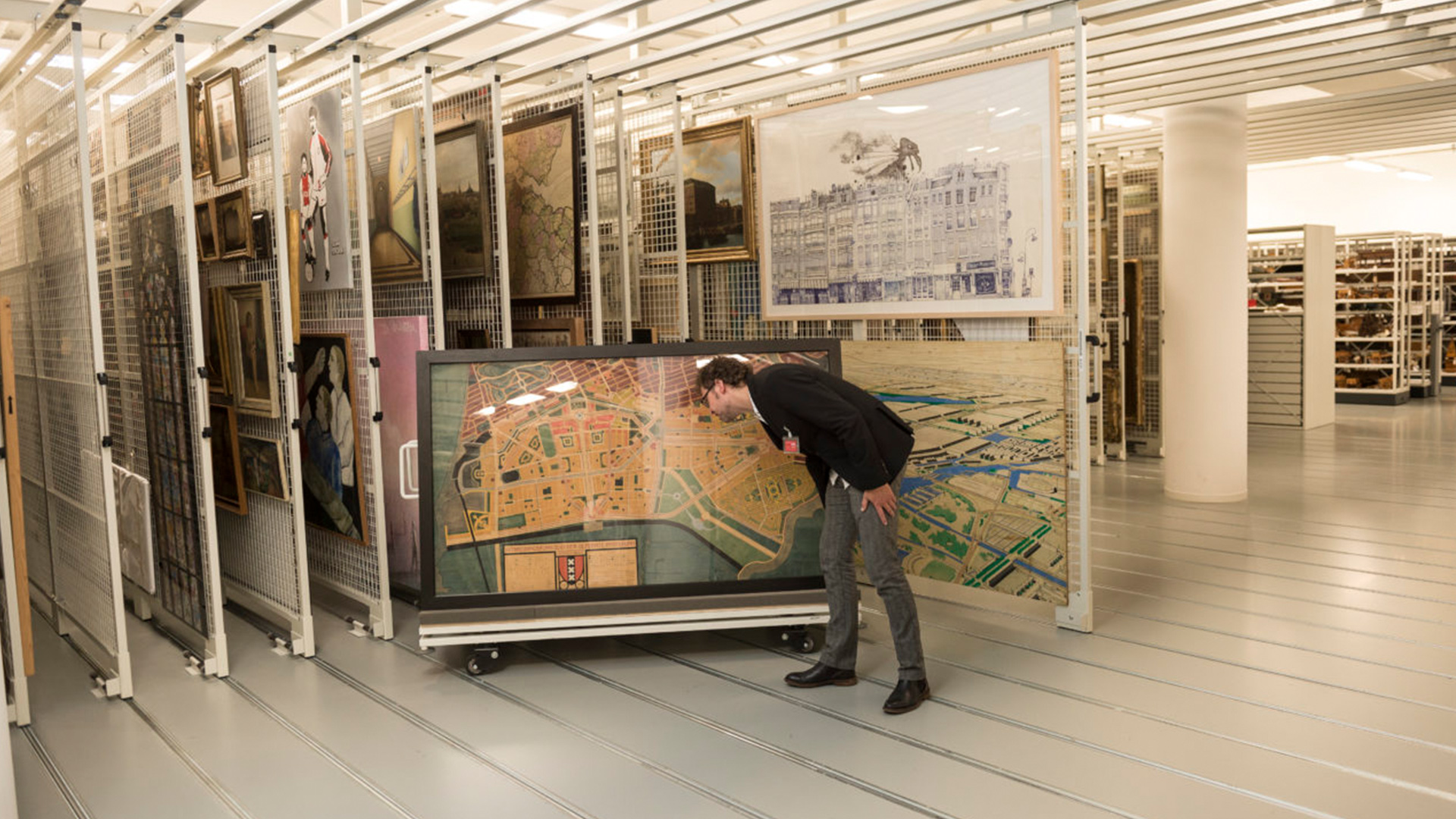A canal lined with trees sounds slightly more attractive if you call it a ‘green tunnel’. Neologisms help urban planners to sell designs, but also offer retrospective insight into failures, as MaartenJan Hoekstra discovered in his PhD research. He also reveals how the meaning of urban concepts tends to change over the years.
What were the designers of the Bijlmermeer thinking when they decided to consistently refer to the honeycomb-shaped flats as ‘IHVs’ and the shared spaces between them as ‘ICGs’? Hoekstra does not believe that they were trying to improve communication: ‘Quite the contrary, their plans were not made to be communicated. And in fact, they never were.’
Hoekstra is both an architect and a linguist, a combination that influenced his choice of subject for his doctoral dissertation. For his dissertation, entitled ‘Urban Planners Design in Words. One Hundred Years of Urban Planning Terms’, like a true Sherlock Holmes he sifted through three major urban planning designs in Amsterdam: Plan Zuid (1900-1917), Bijlmermeer (1962-1968) and IJburg (1995-2003). These are all prominent examples of a social context in constant flux, involving numerous players. Politicians, developers, urban planners, architects, journalists and residents all have their own interests, and each speak their own language. The resulting lack of clarity on terminology is an obstacle to good planning, design interpretation, communication and project realisation. It was therefore high time for more in-depth research.
Hoekstra does not believe that the interpretation of the ‘technocratic’ Bijlmer plan poses many problems. That was a double act involving a group of young urban planners and an enthusiastic city council to create a rational, clean middle-class neighbourhood catering to the makeable society of the future. Convincing arguments were no longer necessary. ‘Everything was already settled, as you can tell from the illegible sketches and incomprehensible wording used,’ explains Hoekstra as he produces a patchy blueprint. ‘This could just as well have been a construction scheme for a computer, don’t you think?’ The few journalists who were not convinced used their own terminology. They described the Bijlmer flats as ‘residential slices’, while the green spaces in between were ‘reserves’. Did the Bijlmer fail due to a lack of communication? No, Hoekstra argues that budget cuts on essential elements, such as the ‘covered walkway’, played a role in wrecking the plan. But the ‘object-word-meaning relationships’, neologisms and synonyms used in the planning process do provide a starting point for gaining additional insight into a plan.
Plan Zuid required a lot more detective work. Architect Hein Berlage drafted a sketch and a 20-page explanation of a residential area with ‘workers’ palaces’ overlooking monumental, leafy lanes. However, some details from the explanation were nowhere to be found in the world-famous zoning map. While conducting archive research, Hoekstra eventually discovered the original sketch, which is rarely shown. ‘At the time, the council chose to hide the sketch in a drawer. They did not agree with the level of detail, of the tram routes for example.’ In this plan, the oldest of the three, the gradual change in meaning of words is the most obvious. In Berlage’s time, ‘neighbourhood’ and ‘district’ were synonyms, and a ‘single-family dwelling’ was a term yet to be coined. One hundred years ago, it was called a ‘single-family house’.
The language in plan number three, for IJburg, is conspicuously visual and almost manipulative. Frits Palmboom’s sketches only use blue and green, as if the development and construction on the IJmeer would actually result in more nature. The ‘green tunnels’ (which were neither green nor tunnels) and ‘visors’ (focused on ‘openness’) are other examples of metaphorical visual language.
Does it matter that designers use language to pitch their designs? ‘Just like the other ‘players’, designers need to be aware of the power of language,' says Hoekstra. ‘Then again: hardly any of those wonderful neologisms have stood the test of time.’

